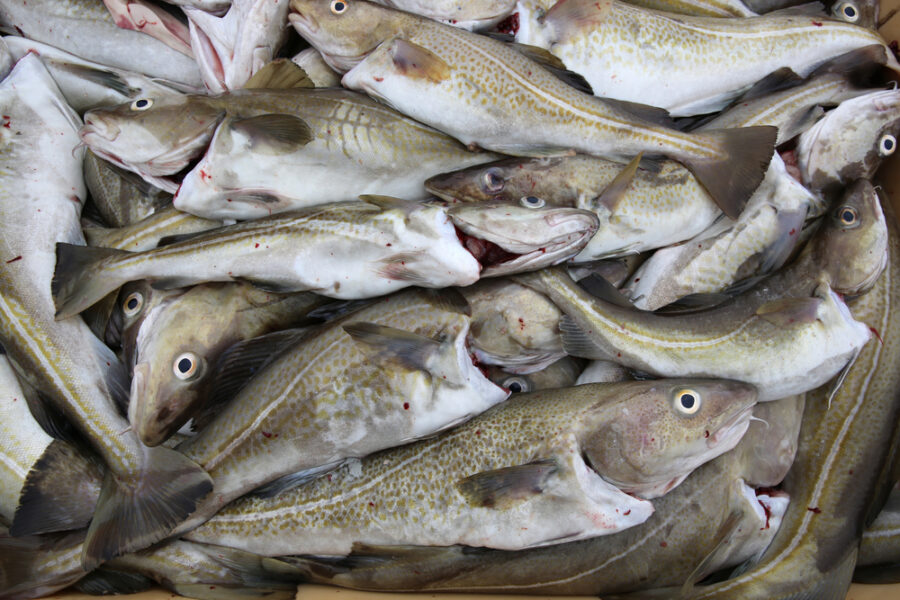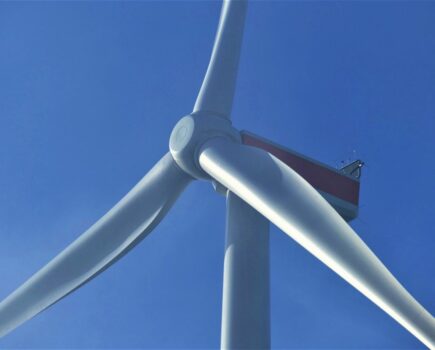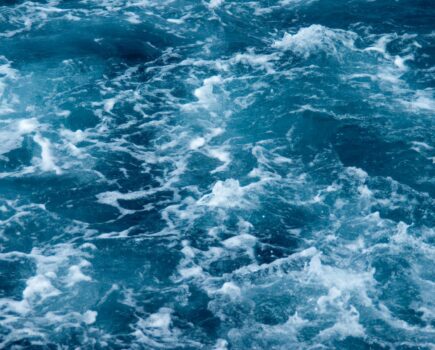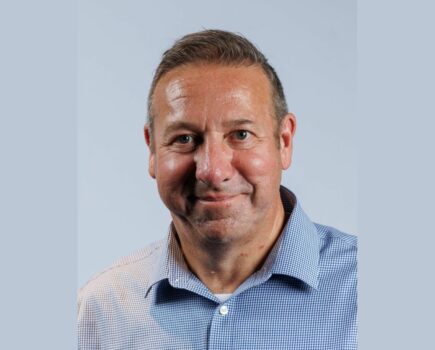Fishermen’s view that stock is healthy vindicated.
ICES has advised a massive 375% increase in the TAC for Irish Sea cod in 2018, after years of zero or tiny by-catch recommendations.
Irish Sea fishermen have argued for years that the science is deeply flawed and that the stock is healthy, and have conducted their own trials to demonstrate this – all to no avail, until now.
But now ICES has dramatically revised its perception of the stock as a basket case, and changed the assumptions that underpin its stock prediction model.
The advice has shifted from a zero catch in 2012, and a minimal bycatch in 2016, to a healthy allocation in 2018, with the stock now considered to be above the maximum sustainable yield trigger.
The industry has welcomed the change and says it highlights just how important it is for fishermen’s practical knowledge and direct experience to play a central role in the stock assessment process.
NFFO chief executive Barrie Deas commented: “For something like 17 years, fishermen in the Irish Sea have not been able to square the scientists’ bleak outlook with their own direct experience.
“In recent years, ICES has tied itself in knots on Irish Sea cod and established a working group – WKIRISH – to try to understand why, even after fishing pressure on cod had been reduced to minimal levels, the stock, according to its assessment model, had not responded by rebuilding.
“As part of that process of re-evaluation, a benchmark review has now come up with this startling, but very welcome, reversal. This is reflected in this year’s ICES advice.”
He pointed out that fishermen have a very direct interest in the scientific recommendations that underpin decisions on TACs, which to a significant extent determine the industry’s earnings in the following year.
“Because of this level of self-interest, too often in the past their views have been dismissed by scientists, fisheries administrators and ministers. That has been a mistake,” said the NFFO chief, adding that it was difficult to avoid saying ‘we told you so’.
“Hindsight, the companion of ‘I told you so’ smugness, is of course a wonderful thing. But it is instructive to reflect on how many times the industry’s views have flown in the face of orthodoxy, but have proven in the end to be closer to the truth.”
He said it is now well understood that we can control fishing mortality but not biomass; that once fishing mortality has been reduced it can take some time for stocks to respond; that divergent TACs in a mixed fishery will generate serious levels of discards; that displacement and unintended consequences will follow draconian measures, as night follows day; and that ‘there is not a linear relationship between a reduction in fishing effort and a reduction in fishing mortality’.
“This all suggests that taking the industry’s views into account during policy formulation should not be regarded as an optional extra, or consultative lip-service, but a prerequisite for a realistic understanding of the issues and, therefore, an integral part of a successful fisheries policy,” said Barrie Deas.
But he added that it was important not to ‘throw the baby out with the bathwater’. “The scientists may be eating humble pie on Irish Sea cod but the general outlook this year on stocks is extremely positive,” he said.
“Hake and North Sea plaice are at levels beyond anything seen in the historic level. Stock after stock is on the up.”
To highlight the huge general improvement in stocks in recent years, he quoted Eskild Kirkegaard, chairman of the Advisory Council of ICES: ‘Over the past 10 to 15 years, we have seen a general decline in fishing mortality in the Northeast Atlantic and the Baltic Sea. The stocks have reacted positively to the reduced exploitation and we’re observing growing trends in stock sizes for most of the commercially important stocks. For the majority of stocks, it has been observed that fishing mortality has decreased to a level consistent with Maximum Sustainable Yield (MSY) – meaning levels that are not only sustainable but will also deliver high long-term yields.
“The position since ICES made this statement, in July 2015, has only got better. In fisheries management terms, that is a sweet place to be,” said Barrie Deas.
“Where we do still have problems, they tend to be those associated not so much with the science but with the EU management framework – with getting the balance right in mixed fisheries; with the arbitrary timetable for MSY in all fisheries; and with the implementation of the EU landing obligation.”
He said the NFFO would be active on all these fronts during the autumn run-up to the quota negotiations for TACs in 2018. He pointed out that this will be the last full year that the UK will be subject to decisions based on proposals made by the European Commission and adopted at the December Council of Ministers.
VIIa cod stocks highest for 25 years
Alan McCulla, chief executive of the Anglo-North Irish FPO, welcomed the ICES advice for 2018 TACs in the Irish Sea as ‘good, but not unexpected news’ that mirrored anecdotal evidence from Irish Sea fishermen.
He said ICES has assessed the cod stock in the Irish Sea to be at its highest level in 25 years and puts the stocks of haddock, plaice and herring at their highest recorded level.
“There will be some who will understandably say that a prospective 375% increase in the VIIa cod TAC is ‘too little, too late’, especially for those who were forced out of the industry because of various draconian management measures imposed over the past 17 years,” he told Fishing News.
“Nevertheless, it is clear that ICES assessments for the main fish stocks in the Irish Sea have turned an important corner, and we can begin the process of building a balanced fishery in the Irish Sea that is not dependent upon one or two stocks.
“We await the autumn advice on Area VII Nephrops and trust that will reinforce the story of what has been a stable and staple stock for Northern Ireland’s fishermen.”
The ANIFPO chief said it was interesting that a lot of weight was being given to the Fisheries Science Partnership surveys that were started in the Irish Sea by the NFFO, ANIFPO, DEFRA and CEFAS. The process had now been adopted by AFBI and DAERA in Northern Ireland, and had been instrumental in turning the science around.
“It has taken a long time, and a lot of blood, sweat and tears have been spilled, but with AFBI’s help we are now on the right road,” he said.
“Careful monitoring of stock status needs to be maintained, but increased TACs, Brexit, the end of Hague Preferences, and a host of marketing and other measures adopted by our fishermen mean the industry in County Down can be more confident about the future.”
Examples of industry being proved right
- The industry in the early 2000s pointed out that automatic 25% cuts in the TAC required by the EU cod recovery plan to achieve biomass targets failed to take account of the fact that Mother Nature might have other ideas. This is now accepted.
- The industry also pointed out that draconian reduction of TACs in a mixed fishery would generate a problem of large-scale discarding of mature fish. So it proved to be the case.
- The case was made that punitive measures would cause significant displacement effects in adjacent areas/fisheries. Many of the management problems we face today have been caused by displacement effects.
- Fishermen opposed effort control as part of the cod recovery plan on the grounds that it would generate unhelpful fishing behaviours. STECF (the Commission’s scientific and technical committee) eventually came to the same conclusion.
Read more from Fishing News here.








